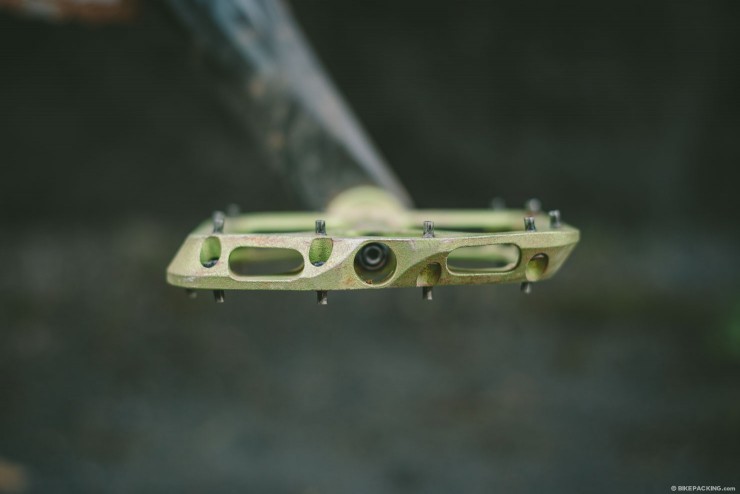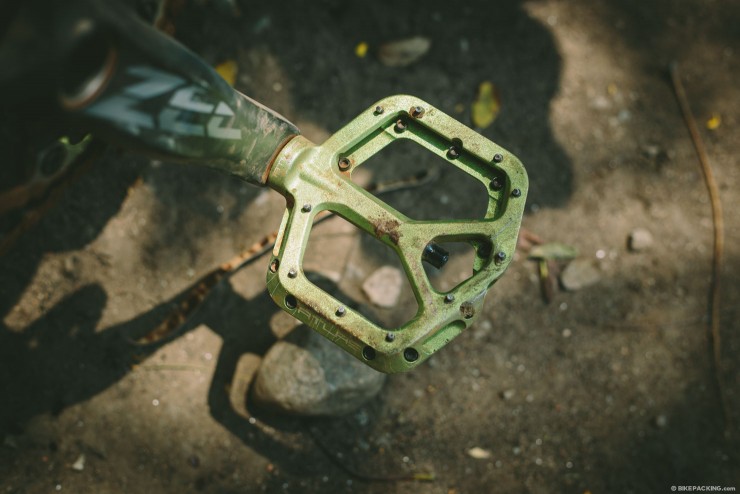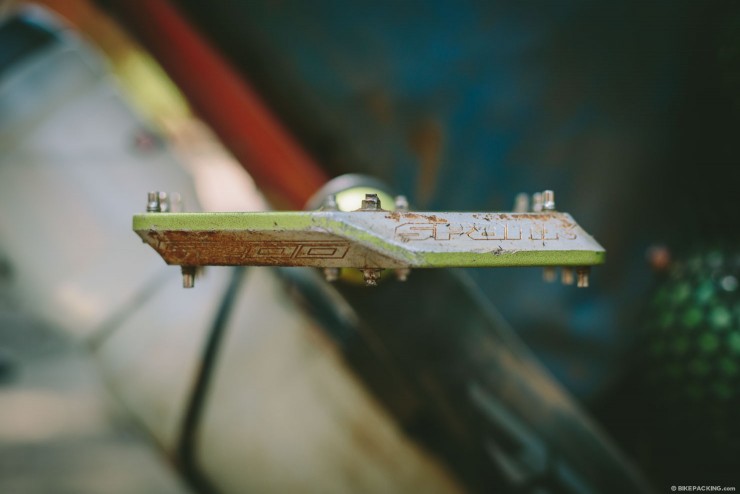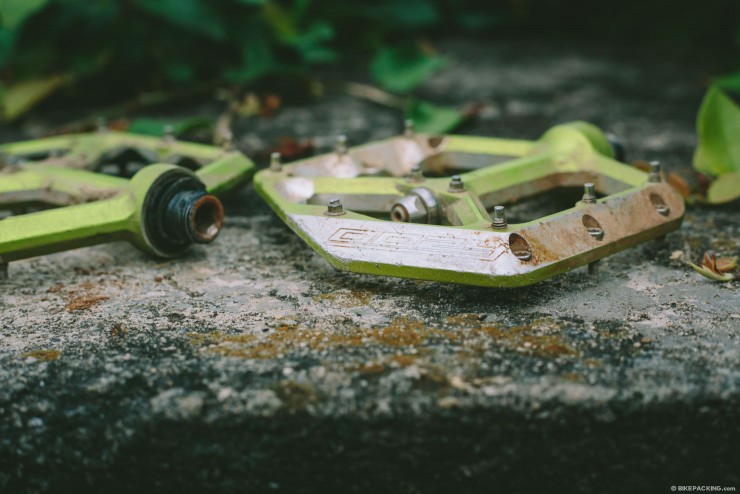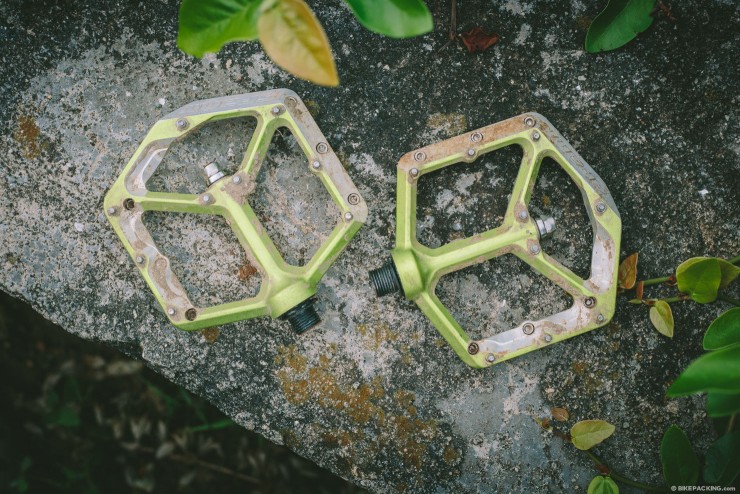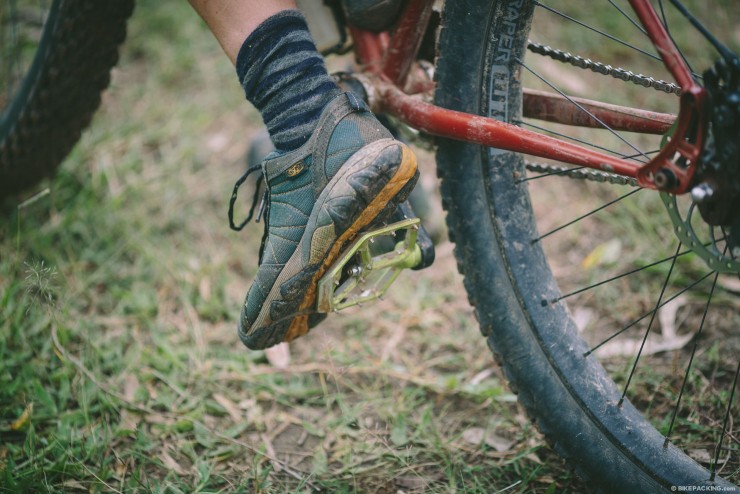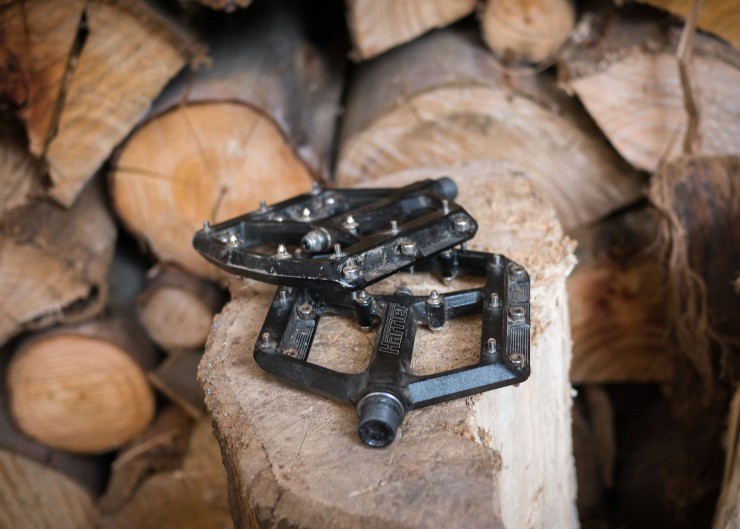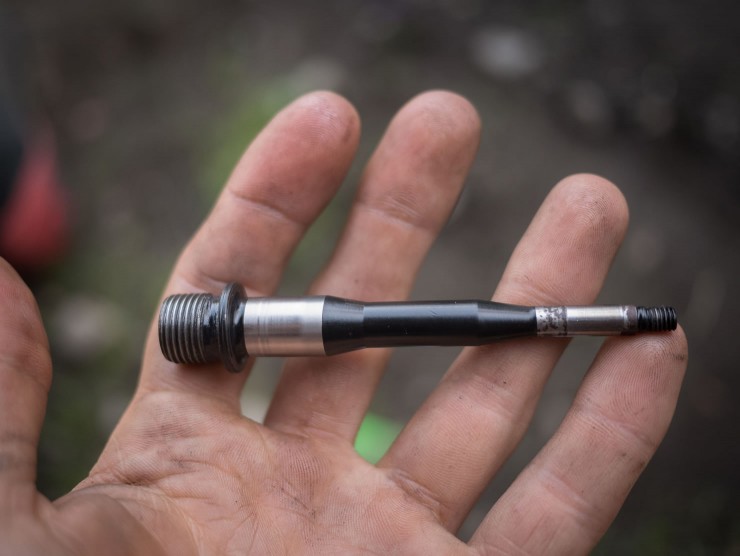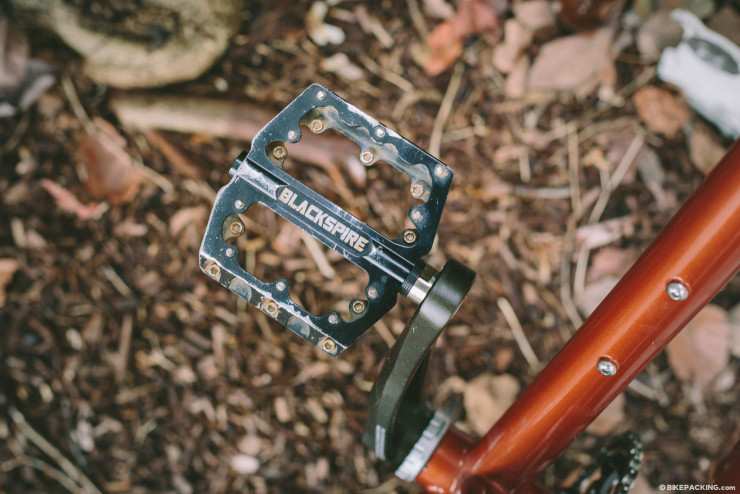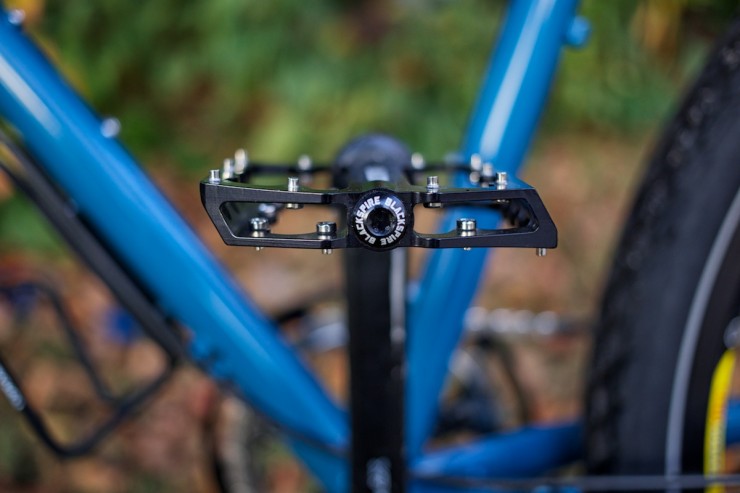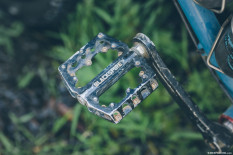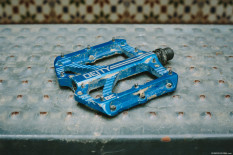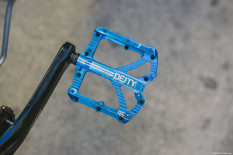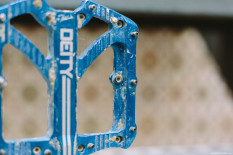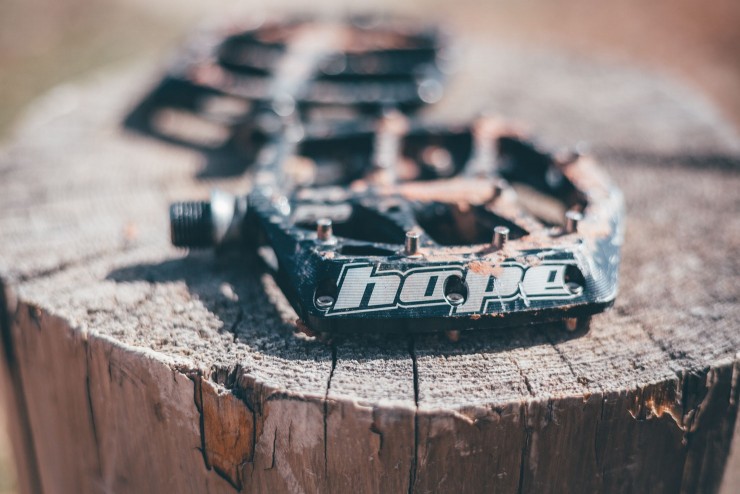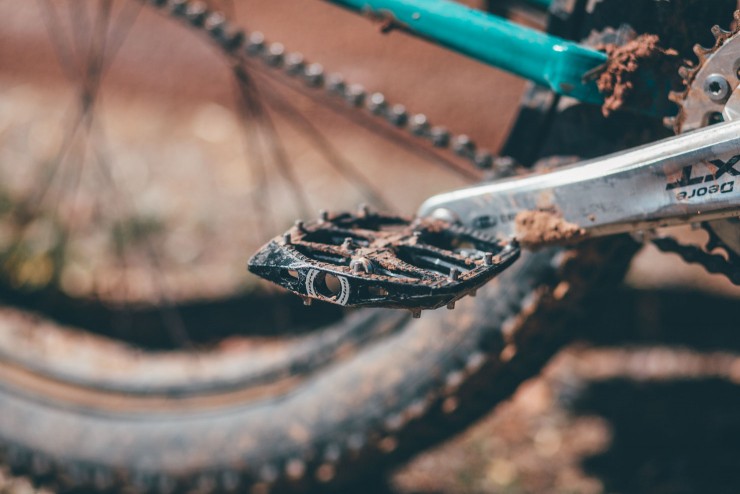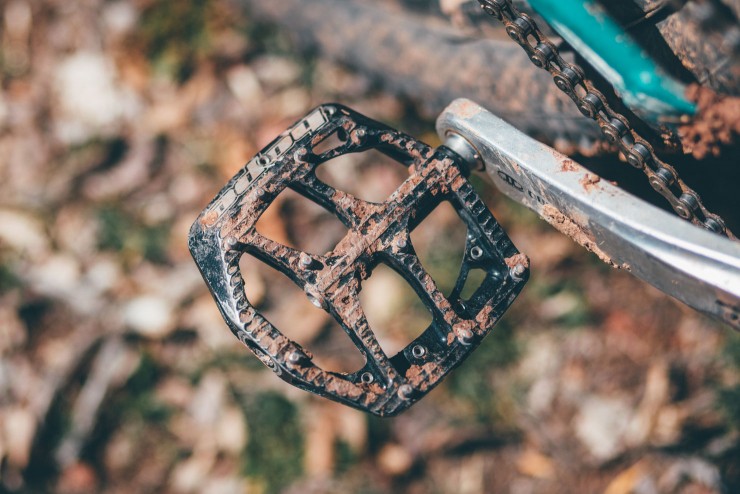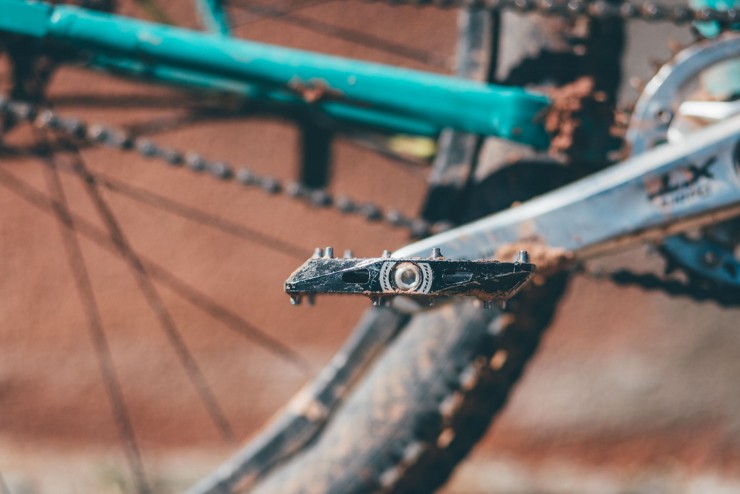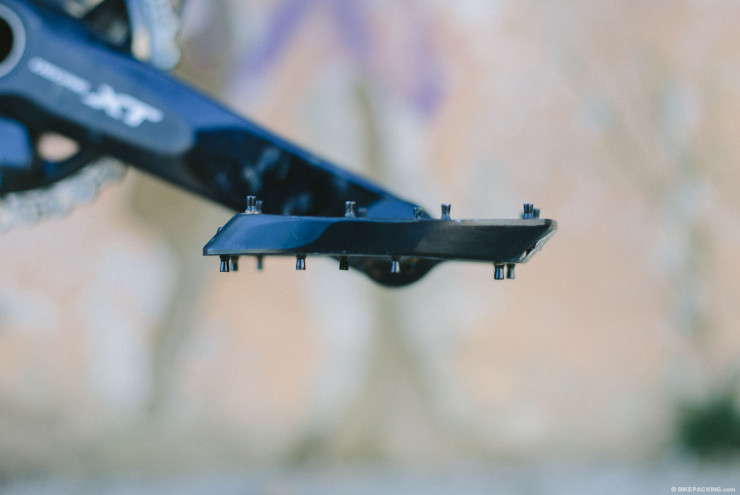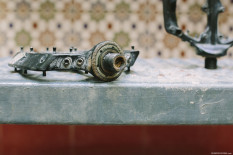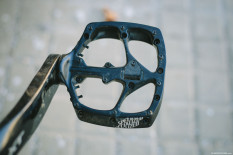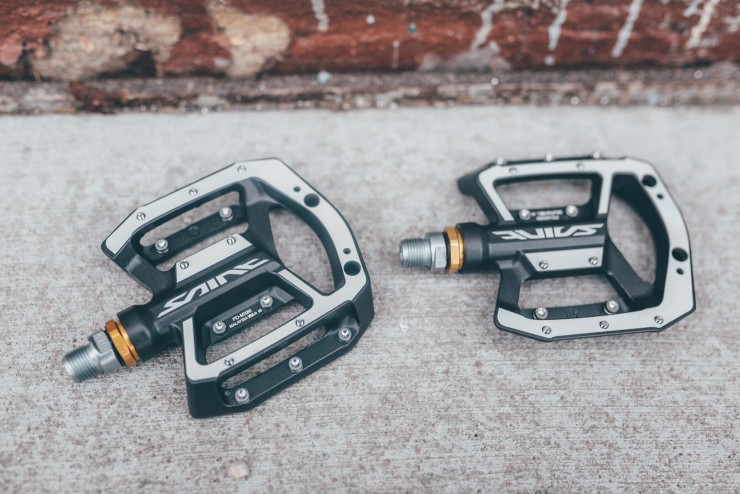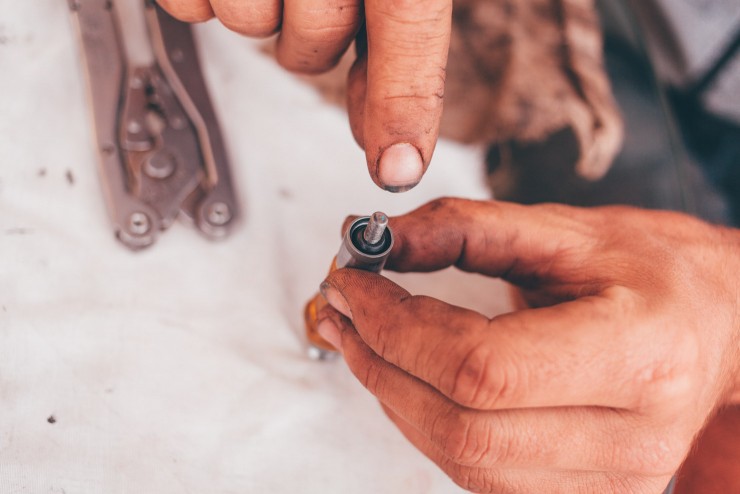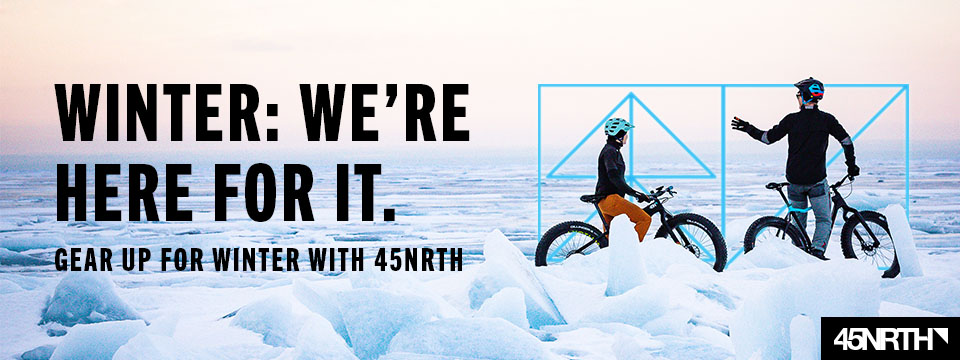Flat Pedals for Bike Touring and Bikepacking
There are plenty of reasons for using platform pedals rather than clipless options when trail riding, bikepacking, and touring. Here’s why – plus 8 of our favourite models, each long-distance trail tested and reviewed.
PUBLISHED Mar 7, 2016
While there hasn’t been much change in the world of clipless cleat retention systems – a market long dominated by the likes of Shimano and Crank Brothers – the flat pedal market has been positively burgeoning. Perhaps this is a result of the growing trend of experienced riders trying out flat pedals for trail riding. Or maybe its down to the improvements in sticky rubber MTB shoes. Either way, flat pedals are holding their own as reliable and efficient tools for all types of riding. It only makes sense that this trend carries over to bikepacking, and even dirt road touring.
For bikepacking and trail riding alike, flat pedals have four points of appeal. The most obvious is that you can instantly release from the bike without fail, easily leverage slick corners, or toe tap when technical sections that supersede your ability. Equally evident is the fact they facilitate off-the-bike exploits; of the kind that would normally require a second pair of shoes, in addition to stiff and often cumbersome SPDs.
Thirdly, they’re a far safer and more comfortable option for hike-a-bikes – so often an ingredient in the best bikepacking trips. The fourth and more intriguing appeal is that flat pedals promote a style of riding that’s fluid with the terrain and the bike. Instead of pulling and hopping the bike, gravity, body english and mechanics become the driving forces. By not being locked to the pedals, a rider is forced to employ proper preloading and weight-shifting techniques to manage contact and position on the bike. These tactics allow you handle the bike in a flowing manner and build riding skills that might otherwise be forgotten.
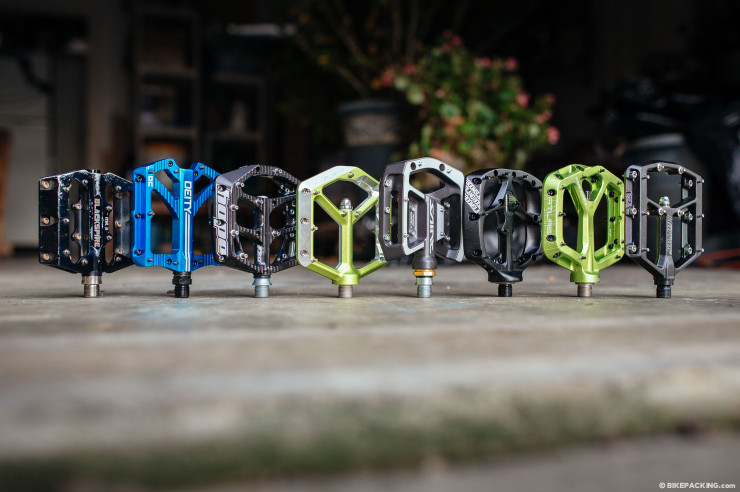
8 Platform Pedals, Trail Tested
As you’ll find in each of the pedals we selected for this roundup, there are a few important features to consider. Firstly, choosing the right size platform for your feet is crucial. Q-factor is another trait to look at, although it’s not an official term for pedal width; some offer a more tight stance, while others spread out your feet; some claim that a more narrow stance improves comfort and pedaling efficiency over the long haul. You’ll notice that the pedals below with reduced Q-factor have shorter axle length by eliminating hex wrench accessibility. We also like pedals that have recessed pin screws or heads that are screwed in from the nooks on the non-traction side; this prevents allen heads from getting bashed by pedal strikes, which can render them inaccessible and difficult to replace. Another feature to look for is the availability of a rebuild kit. On an extra long trip, it may be worth carrying spare bearings or bushings.
Below you’ll find 8 of our top pedal picks that we trail tested and reviewed, listed by weight. If you have a favorite platform pedal that’s not listed here, let us know in the comments at the bottom of the page…
Race Face Atlas
Race Face Components, BC, Canada
The folks at Race Face have a local proving ground at their disposal that includes the likes of Whistler and the North Shore. So it should be no surprise that they are familiar with the abuse that rugged terrain and hard riding can dish out on a pair of pedals. Like other components in their premium Atlas line, these pedals were designed with such rigors in mind, and ultimately meant to share duty with both trail style riding and downhill hammering alike.
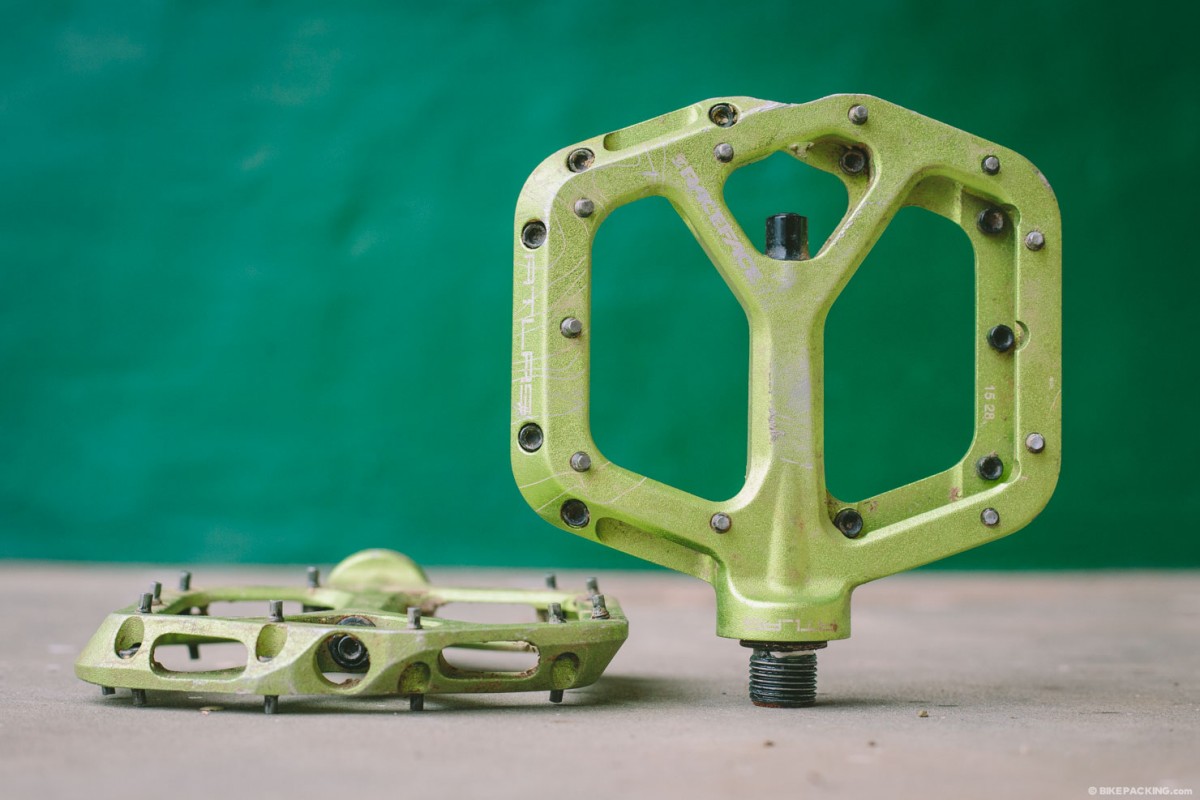
The Atlas 6061-T6 aluminum body is distinctively svelte. It’s the lightest pedal listed here and features an alien-like molded double-concave platform measuring in at 101 by 114mm at a thickness that goes from 12mm at the spindle to 14mm on the outer edge. These numbers are fairly consistent with other pedals here, save a slightly longer length. In addition the large industrial bearing on the crank side, and lack of axle wrench facing, affords a decently narrow Q-factor. Other than the large sealed bearing, the Atlas also has three sealed micro bearings per pedal. The pedals are fully serviceable via a pedal rebuild kit that includes both the outer and inner bearings as well as a bearing press, seals and other parts.
Like all of the other pedals mentioned here, the Atlas has bottom loading pins to ensure they can withstand the abuse that rocky tracks can dish out. One feature unique to the Atlas is the way the pins are aligned at the fore and aft of the pedal. There are ten traction pins total, but the outer eight are angled slightly inward, which Race Face claims offers even more grip. Unlike many of the other pedal options listed here, the Atlas has no center pin. But, on our rough and tumble Trans-Uganda ride, so far this hasn’t been an issue. The pair I brought along is green, but they are also available in black, red, blue, purple, and orange.
- Footprint: 101x114mm
- Thickness: 12-14.5mm
- Weight per pedal: 6.2oz/175g
- Rebuild Kit Available: Yes
- Bushings/Bearings per pedal: 1 crank side sealed cartridge bearing/3 micro bearings
- Country of Manufacture: Taiwan
- Price: $153.00 (online)
BIKEPACKING.com’s Take: “I’ve put the Altlas pedals to a beating on over 1,500 miles on the Trans-Uganda and a ride in Rwanda, some of the bumpiest dirt roads and trails I’ve ridden to date. The only issue I’ve found is a tiny amount of side-to-side movement between the pedal platform and the axle when moving the pedal back and forth in the direction of the axle. This was evident when they were new and hasn’t gotten worse throughout the ride, but it is noticeable from time to time. Otherwise, the Atlas’ grip is paramount and I really like the longer length of the platforms. Overall, this is a pedal that was designed to be beaten and still perform over longterm abuse.” – Logan
Spank Oozy
Spank Industries, Washington, USA
Spank came on the downhill and free ride scene in 2011 with their hit Spike pedal, one of the most successful flat pedals introduced in recent years. The Spike was known for it’s large platform and extremely thin profile. Several years later they introduced the Oozy Trail pedal with the same general size and stature, only 58 grams lighter. The pedal’s aluminum body has nine pins per side and measures 111 by 111mm with a 12mm profile, numbers that translate into a thin platform with plenty of sole sticking real estate. In addition, the well thought out, beveled, angled, and polished outer profile of the platform helps eliminate pedal strike in rocky and rooty terrain.
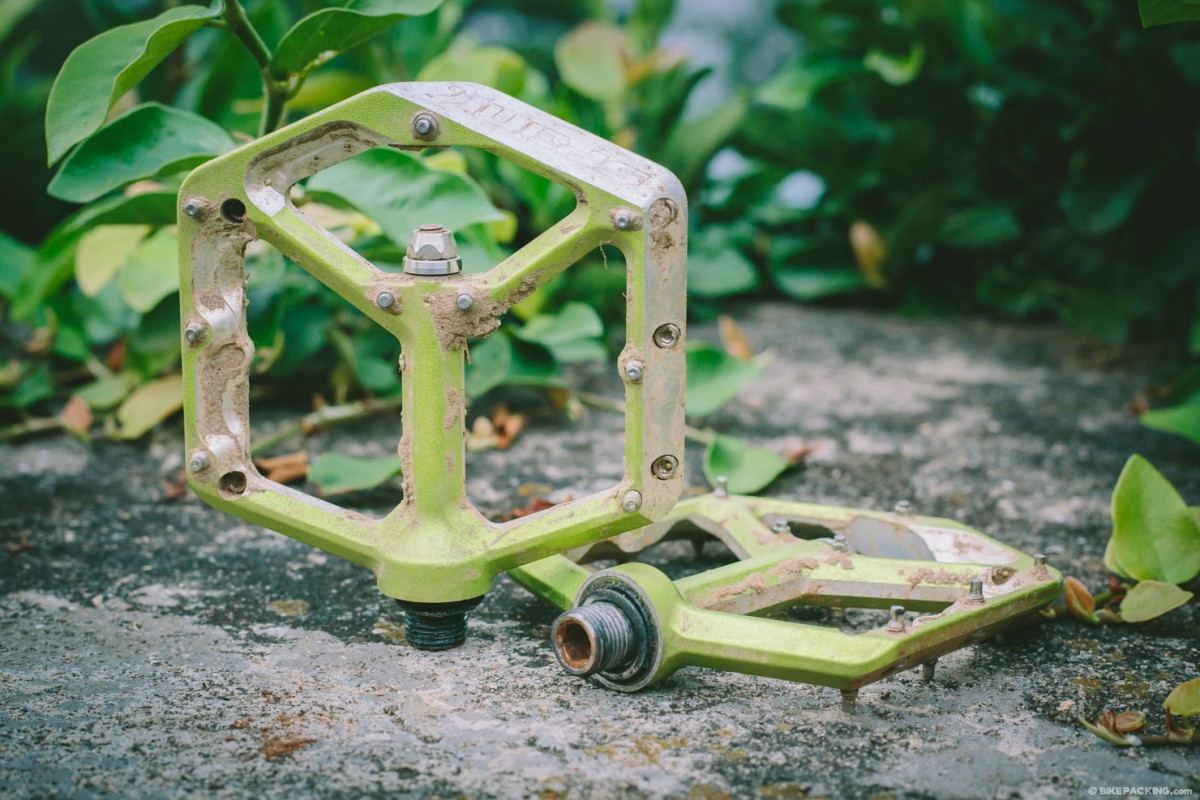
Although seven of the traction pins screw in from the non-traction side of the platform, the three center pins do not. The two center pins aren’t much of a factor considering that the majority of pedal strikes occur on the outer edges. But the single outer-center pin is in a location that could be mauled by the stray baby-head. That said, after 1,500 miles of rough dirt roads on the Trans-Uganda, we haven’t had an issue. Even if we did, the pin design uses a hex nut drive design and could be removed with a pair of pliers in a pinch. Also, regarding pin design, Spank used slightly shorter pins for the center area to mimic a concave design for added grip.
The Oozy Trail’s platform spins on a chromoly spindle via a single sealed cartridge bearing and an outboard IGUS bushing, which is sealed from contaminants by a rubber o-ring and a stainless steel cap. IGUS bushings are made from a self-lubricating plastic material that’s not only hard enough to resist impact damage, but also easy to replace if need be. By eliminating the wrench accessibility from the pedal axle and leaving mounting duties to an 8mm allen key, Spank reduced the spacing between the sealed industrial bearing and the crank. This not only lessened the leverage on the bearing, but reduced the Q-Factor spacing between the riders feet. With the oversize bearing design, it’s necessary to use pedal washers to prevent the aluminum body from being inhibited at the crankarm. Like its predecessor, the Oozy is available in emerald green, silver, black, blue, and red.
- Footprint: 110x110mm
- Thickness: 12mm
- Weight per pedal: 6.4oz/182g
- Rebuild Kit Available: Yes
- Bushings/Bearings per pedal: 1 sealed industrial bearing (crank side) / 1 IGUS bushing
- Country of Manufacture: Taiwan (in-house facility)
- Price: $130.00
BIKEPACKING.com’s Take: “My set of Oozy Trail pedals have held up extremely well over 1,500+ miles in Uganda and Rwanda. In addition, they have a nice grip, even wile wearing a pair of Keen shoes that have not-so-sticky rubber soles. When they were new, there was a little resistance built in to the pedals because of the IGUS bushing, but it quickly broke in and is not evident when pedaling. Overall, the Oozy is a reliable pedal that’s amazingly light for it’s platform size. In addition, it’s taken a beating and is still spinning perfectly.” – Virginia
VP Harrier
VP Components USA, California, USA
VP’s Harrier pedals stand out primarily for their size. At 120mm wide, and 110mm front-to-back, these pedals are among few out there capable of properly supporting size 13 sasquatch feet. Riding shoes intended for flat pedals often lack the stiffness of SPD equivalents, and even for my average men’s feet (10 US), the support afforded by these pedals greatly reduces foot fatigue on long, rough descents. After spending time on these pedals, I can’t help but feel that mountain bike pedals are chronically undersized. It will be impossible for me to go back to something smaller. At 366g for the pair, the size doesn’t come with a weight penalty. Instead, the Harriers’ minimalist design leaves lots of space for shedding mud, while still offering category-leading support and strength. Only riders with especially small feet are likely find the relatively large gaps in the platform a detriment.
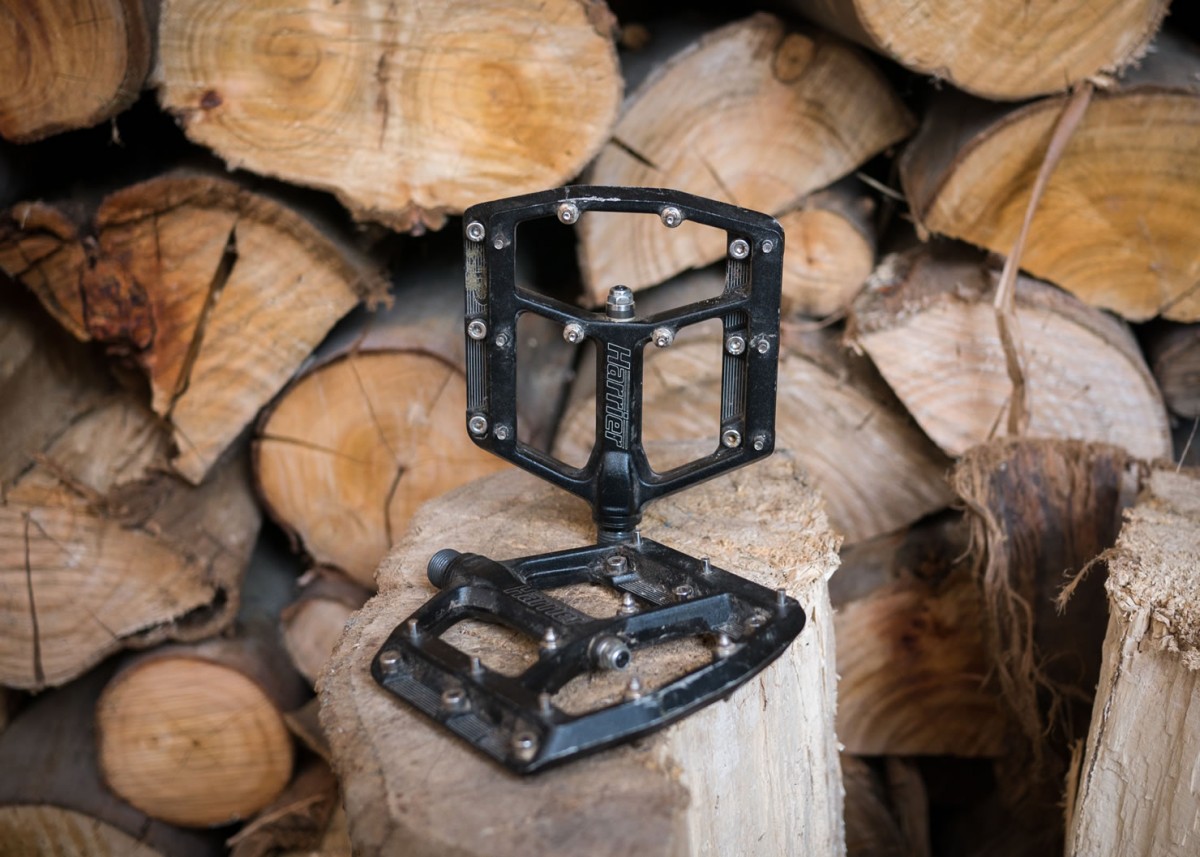
Their thin, 12mm profile also helps lend these pedals a great feel – thinner pedals make your bottom bracket height feel lower, and feel more stable, while keeping rock-strikes to a minimum. The completely flat profile may turn away believers in concave pedals, but I honestly could not notice any down-side on such a large pedal. Though I’ve played around with removing some of the middle pins, the feel of the Harriers as they come out of the box, with 10 pins per side, is among the best I’ve found in a flat pedal. The fact that there is no inboard bearing bulge means the “sweet spot” on these pedals extends right to the crank arm allowing for a narrow Q, but also forgiving almost any rushed, desperate foot placement on janky trails.
Any doubt I may have at these pedals is directed at the polymer bushing used in lieu of an in-board bearing. The use of a bushing allowed VP to avoid the bulge of a large in-board bearing, or the vulnerability of small bearings (a weak-point when it comes to big impacts and durability). The down-side is that a small amount of play will develop in the pedals as the synthetic bushing material is compressed after the first hundred or so hours of use. This play cannot be felt while riding, but can be detected by hand.
At this point, it’s not clear to me how the life expectancy of a bushing should compare to bearings, but it’s reassuring that the pedals are extremely easily serviced, requiring no shaved-down titanium socket to remove the lock-nut, as is so common with other pedals. An 8mm Allen key, an 8mm wrench and some grease are all that’s needed for a full pedal service. Replacement bushings are available from through most bike shops. The pedals are removed with an 8mm hex – the strongest tool included on most multi-tools – so that pedal removal for travel and extended hike-a-bike is easy.
- Footprint: 120x110mm
- Thickness: 12mm
- Weight per pedal: 6.5oz/183g
- Rebuild Kit Available: Yes
- Bushings/Bearings per pedal: 1 Igus t-flange bushing / 1 DU bushing / 1 Teflon thrust bushing
- Country of Manufacture: Taiwan
- Price: $120.00
UPDATE: The seals on the Harriers are really simple and don’t go a great job, so the longevity of these pedals is dependant on very regular maintenance, especially after exposure to water. After giving my Harriers a service, I found that one of the bushing race surfaces on the axle is pitted and worn. Unfortunately, I retract my shining recommendation, given I’ve been more diligent than your average person to keep them packed with grease, and they’ve still only lasted 2500 miles. The seals on both ends have proven to be pretty bad at keeping out contaminants. That said, according to VP, the latest version (2016) has a new axle system that should be even more serviceable and tougher.” – Skyler
Blackspire Sub4
Blackspire, BC, Canada
The Sub4 (now Sub420) was a classic pick to go in this group, for one reason: it was my first pair of flats and I rode them for over 7,500 kilometers from Cape Town to Tanzania, then Morocco and Southern Spain. Of course one had a nice rumble to it at the end of our journey, but after a fairly painless rebuild, it was like new, save a few dings and scratches.
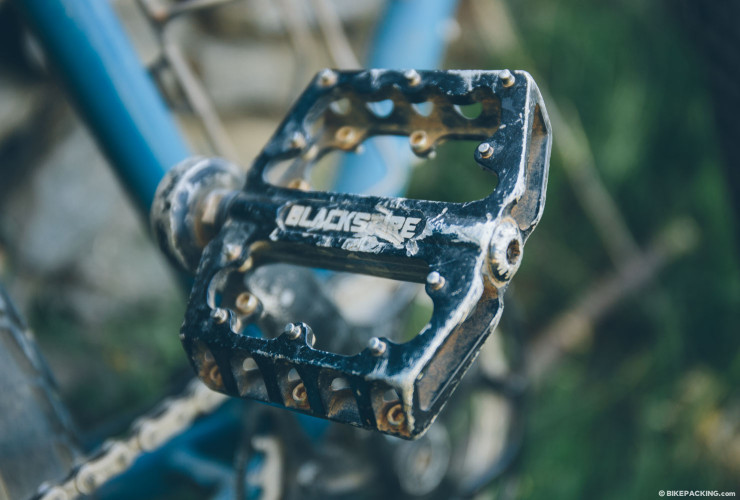
It’s worth pointing out that my stance on this pedal has changed a bit since the original review. The Sub4s have the smallest platform of the group reviewed here; I’ve since had my opinion swayed by larger platforms for my average size 10 shoes. That said the 92 by 92mm real estate is perfect for those with smaller shoe sizes. The smaller platform, of course, translates to a lighter package.
Even with the slightly smaller platform, the Sub4 (now Sub420) has 10 pins per side and offers excellent traction, albeit not the best in this group. The true benefit to these pedals is reliability. Each Sub4 platform moves on a chromoly spindle via two sealed micro cartridge bearings and a single DU bushing. After nearly 5,000 miles, Gin’s pair was still spinning with no issues at all. One of mine had a bad bearing, but it still got me where I was going. After the fact, all that was required was a quick swap of the bearings from a $25 rebuild kit (which actually services 4 pedals). It was a fairly simple task and now they are good for the next trip.
- Footprint: 92x92mm
- Thickness: 17mm
- Weight per pedal: 6.5oz/186g
- Rebuild Kit Available: Yes
- Bushings/Bearings per pedal: 2 sealed cartridge bearings / 1 DU Bushing
- Country of Manufacture: Canada
- Price: $116.00
BIKEPACKING.com’s Take: “After an obsessive amount of research trying to find the perfect pedal that would tick all the boxes, and had proven reviews, I landed on Blackspire Sub4s for our 2013 Africa trip. Their size and weight were perfect, and after 7,500 KMs, they proved both reliable and durable. They are also fairly easy to rebuild. After doing so, they are still running smoothly.” – Logan
Deity Bladerunner
Deity Components, Nampa, Idaho
The Bladerunner certainly has the raddest name of the four pedals made by this Idaho based company, and perhaps the best name in this roundup. But that’s not the only reason it stood out as one to shakedown over an 800+ mile rugged bikepacking trip in southern Spain.
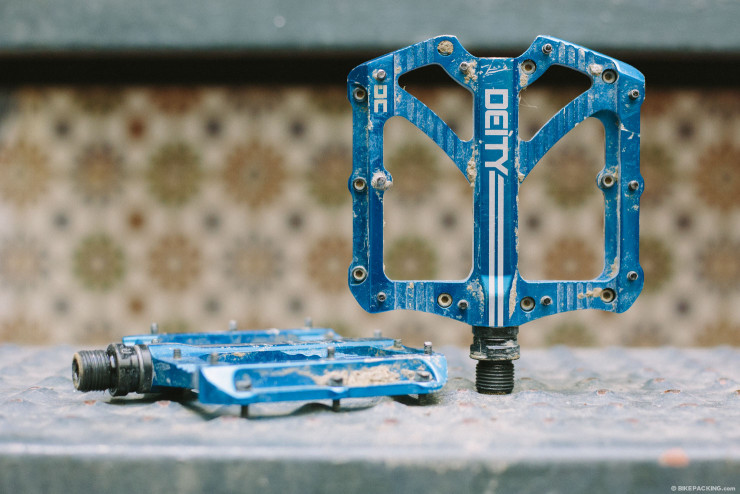
The Bladerunner has a goldielochs sized 103x100mm 6061 T6 aluminum platform (not too big and not too small). Each body spins via three sealed micro bearings and one DU bushing on a polished chromoly axle, which interestingly enough can be left on the crank while the pedal is serviced. The pedal can be removed or tightened with an 8mm allen key or a standard pedal wrench. Even with the pedal wrench nut, the Bladerunners have a Q-factor that’s narrower than most in this group. This is probably more due to the squared off profile of the platform, but is definitely worth considering for fat bikes or rider preference.
The platforms are not concave, but the center pins are slightly shorter, which creates a concave profile. The 10 threaded pins per side are removable from the side opposite the traction, which protects the allen head from deforming rock bashes. The Bladerunner is available in anodized black, red, green, blue, or purple.
- Footprint: 103x100mm
- Thickness: 11mm
- Weight per pedal: 6.6oz/188g
- Rebuild Kit Available: Yes (with socket)
- Bushings/Bearings per pedal: 3 micro sealed bearings/1 DU bushing
- Country of Manufacture: Taiwan
- Price: $143.00
BIKEPACKING.com’s Take: “I wanted a pedal that was big enough to stay comfortable, with pins long enough to stick to the shoes. The Bladerunner offered both in a very attractive package, plus it has solid internals that stood up to the long and rough trip, with no play or bearing wear to speak of.” – Virginia
Hope F20
Hope Tech, Lancashire, England
Hope’s legendary CNC machining is coveted within mountain biking circles. True to form, the F20s are indeed a handsome pair of platform pedals, available in a range of 6 colors to suit all tastes. But the beauty of these pedals is undoubtedly more than just skin deep. Built for the downhill market, they’re extremely well made, with a gentle concave shape and a generous platform that feels supremely comfortable under foot.
Worth noting too, is that the 20 removable pins are more pronounced than many others, making them well suited to a more traditional hiking shoes, as well as more tacky footware from the likes of Five Ten et al.

In terms of servicing, you’ll need a socket wrench to access the M5 locknut, behind which nests three sets of bearings, with a bushing on the inboard side. Hope’s website includes a useful exploded diagram of the pedals, so you can easily figure which bits go where, and any replacement parts you may require. Bear in mind there are no spanner flats to these pedals, so you’ll need an 8mm Hex key to fit them – make sure the threads are well greased to avoid that last minute panic at the airport.
Pricing-wise, F20s are in no ways on the budget end of the spectrum. But given the quality of their build and their serviceability, it’s money well spent.
- Footprint: 105x100mm
- Thickness: 14mm
- Weight per pedal: 6.9oz/195g
- Rebuild Kit Available: Yes
- Bushings/Bearings per pedal: 3 sealed bearings and a norglide bush
- Country of Manufacture: UK
- Price: $160
BIKEPACKING.com’s Take: “I absolutely love the F20s. Their long and stout pins – extending 5mm from the platform – mean almost any pair of shoes I wear feel securely anchored in place. Even ones with lugged hiking soles. By the same token, just beware of the hike a bike, as these pins are prone to gouging calf flesh! After several months of hard use, bearings are still running buttery smooth. It’s also reassuring that a couple of friends have used them on multi-month, long distance journeys with nary a cause for complaint.” – Cass
Specialized Boomslang
Specialized Bicycle Components, California, USA
The Boomslang pedal was originally designed for sponsored downhill rider Sam Hill. Then Sam left Specialized, and the rumored new pedal went silent, until fall of 2014 when it started popping up in the blogosphere. The Boomslang stands out from the crowd for numerous reasons. The first and most obvious is its amorphic shape and clean lines. The Boomslang has a nice oval footprint that is fairly large at 110mm by 108mm. It also boasts a cambered thin side profile at 10mm at the spindle which flares out to 15mm at the edges.
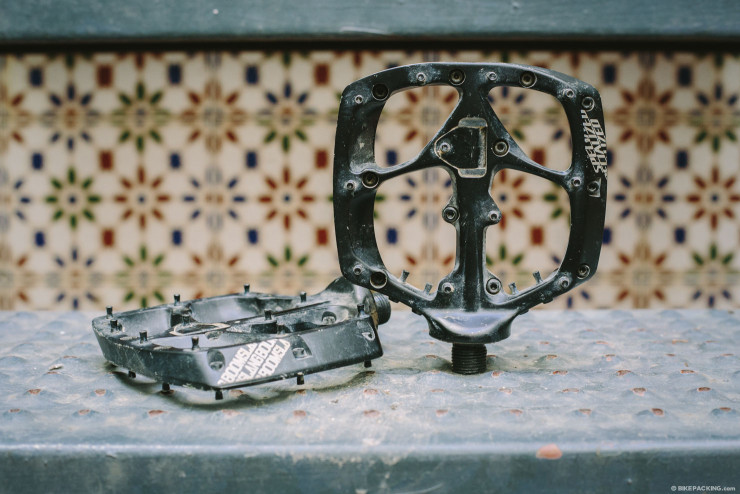
Specialized’s approach to traction pins also offers several standout features. Like the other pedals reviewed here, they screw from the non-traction side, which preserves their allen head. But the hourglass shaped pin design is the most unique. Specialized claims that this offers “clipped in performance without cleats”. I won’t argue; I found the Boomslangs, paired with Freerider Contacts, to have magical glue-like properties that kept my shins pretty throughout 800 miles of the gnarliest rocky tracks in southern Spain. In addition, one of the most innovative features on the Boomslang is the spare pin storage. Four extra pins are screwed directly into the side of the pedal which make for easy trail-side replacement, should one become damaged on the platform.
Another innovative feature unique to the Boomslang is the bearing and spindle system. Rather than the traditional side-inserted needle bearing, the bearing is inserted through an easily accessible trapdoor in the top of the platform. The Boomslang also features a completely smooth spindle with no threads or bevels, which are what typically weakens a spindle. This design keeps the pedal body thin without sacrificing strength, as might be the case with similarly thin models (although, this may not be as important unless you are a downhiller to the likes of Sam Hill). It’s worth noting that the outboard sealed bearing is snugged up against the crank arm. This makes for a good, narrow Q-factor, but eliminates the ability to remove the pedal with a traditional pedal wrench. Not a factor, in my opinion.
- Footprint: 110x108mm
- Thickness: 10mm
- Weight per pedal: 7.7oz/217g
- Rebuild Kit Available: Yes (Specialized retailers)
- Bushings/Bearings per pedal: 1 Large Sealed Cartridge Bearing / 1 Bushing
- Country of Manufacture: Taiwan
- Price: $180.00
BIKEPACKING.com’s Take: “Out of the 4 pedals in this group that I tested, the Boomslang was my personal favorite. Although most of the options here have really good traction properties, the Boomslang took the cake. And, after over 800 miles of rough riding, there were no issues to speak of. It’s the highest priced and one of the heaviest pedals here, which may be its downfall, but with the extra pins, a solid bearing and spindle design, and excellent traction, the Boomslang is a well thought out pedal built for performance over the long haul.” – Logan
Shimano Saint MX80 Flat Pedal
Shimano Cycling, California, USA
Successors to the popular DX series of yesteryear, the MX80s are Shimano’s latest flat pedal offering for the downhill crowd.
Unlike most other high end pedals on the market, Shimano favours the more traditional cup and cone bearing approach (as with their hubs), over new fangled sealed cartridges and bushings. This is both a good and a bad thing. On the one hand, it means the MX80s can be readily serviced on the road, without the need for any specialist parts and tools. But on the downside, keeping on top of their maintenance is especially important – run them loose for too long, and you risk damaging the cones. Servicing them is a touch fiddly, given all the greasy bearings, but it’s relatively easy. In fact, it’s worth given them a service upon purchase, both to familiarise yourself with their innards, and because the bearings benefit from extra grease.
On the plus side, the Chromo axle is standard to Shimano’s other pedals, so replacements are relatively easy to come, should you accidentally damage one.
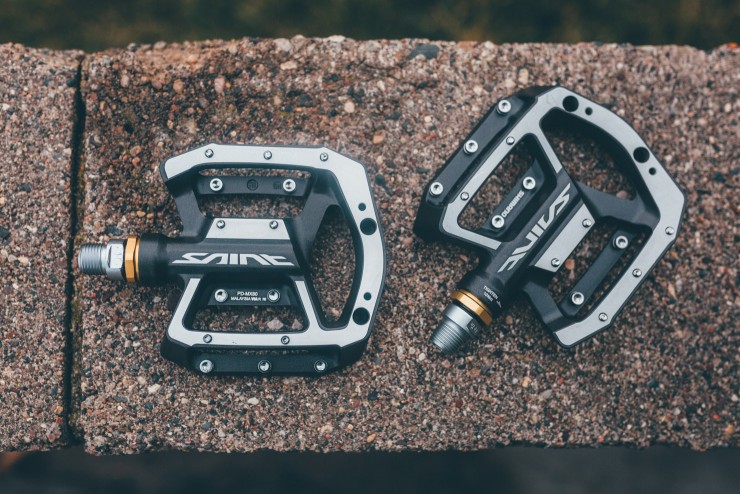
Saints have a pleasant concave design that cups the foot nicely. In terms of grip, the pins themselves are relatively small. Their depth can be adjusted through the use of spacers; jettisoning them definitely makes for a much grippier feel. Note that they have spanner flats. This means they’re a little wider than the other pedals in this roundup, but they’re easier to remove.
On the scales, the MX80s are a little portlier than some, reflected in part by their more affordable price point. In fact, price is where the Saints score best. It’s impossible to ignore the variety of great deals to be found online, making them a solid option for anyone seeking a quality flat pedal at the more ‘budget’ end of the market.
- Footprint: mm
- Thickness: mm
- Weight per pedal: 8.6oz/245g
- Rebuild Kit Available: Yes
- Bushings/Bearings per pedal: Loose bearings
- Country of Manufacture: TBC
- Price: $90.00 (many deals online)
BIKEPACKING.com’s Take: “I ran platform Saints throughout South America. Broadly speaking, I’ve been happy with them; they’re certainly comfortable underfoot and solidly made. Given the choice though, I’d actually prefer sealed bearings. Having neglected to service the first set I bought, I pitted the cones as a result – these pedals are now retired to my commuting bike. Lesson learned. I’ve been more cautious with my second set, with no issues at all. ” – Cass
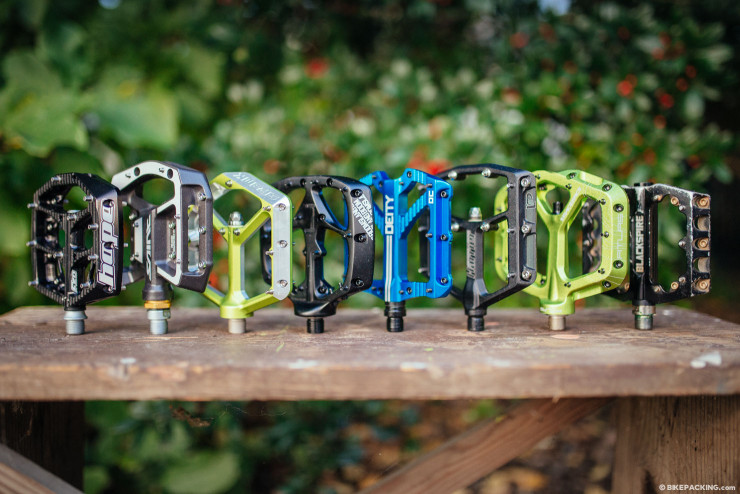
Please keep the conversation civil, constructive, and inclusive, or your comment will be removed.
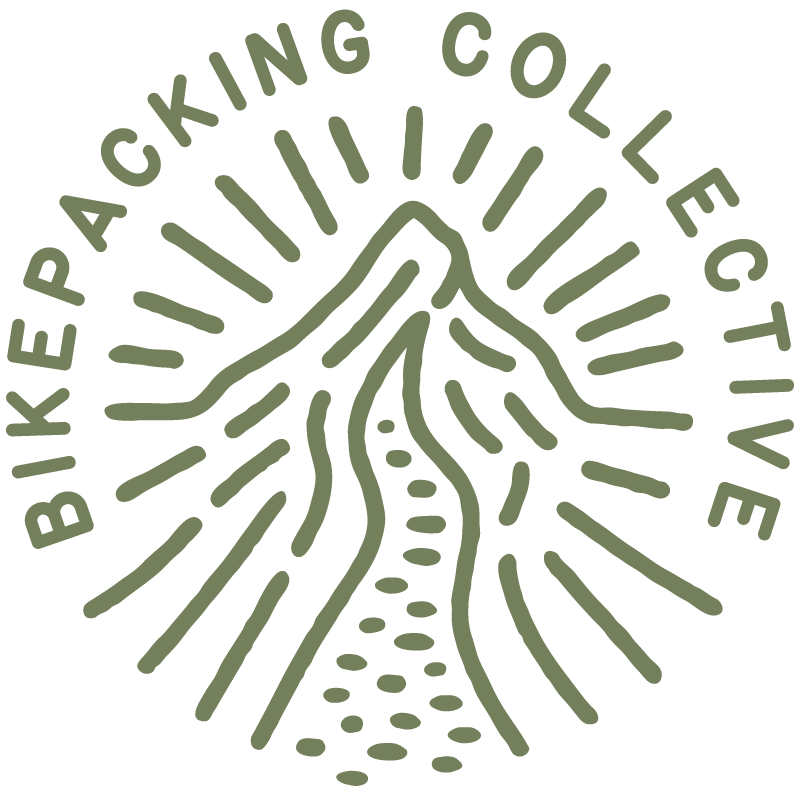
We're independent
and member-supported.
Join the Bikepacking Collective to make our work possible:








